Ecomfort Website
Overview
This case study details the process of developing an e-commerce site for a new bed-in-a-box mattress brand. The project focuses on making a user-friendly and appealing online space that highlights the mattress’s unique benefits, encourages online purchases, and strengthens the brand’s position in the crowded mattress market.
The Product
Our goal is to offer customers a comfortable and budget-friendly mattress that they can easily purchase online. Our special bed-in-a-box design provides excellent support and comfort, using top-quality materials and smart technology. We put our customers first by giving personalized advice, ensuring a smooth shopping process, and providing a generous sleep trial.

The Problem
The mattress market is getting more competitive, with many online stores providing a variety of choices. Customers find it hard to make smart buying decisions because they can’t try the mattresses in person and there’s so much information online.
The Goal
- Develop a user-friendly and engaging e-commerce platform: A clean, easy-to-navigate interface that minimizes friction in the decision-making process
- Effectively communicate the unique selling propositions (USPs) of the mattress: Engaging visuals that communicate comfort and quality without the need for a physical touchpoint
- Drive online sales and revenue growth: A seamless checkout process with clear and concise information about delivery and returns policies.
My role
I was in a team of three, and we had support from the marketing and development team. I focused on visual design and also contributed to research.
Responsibilities
- User research
- Sitemaps, User journey maps
- Digital wireframes and Lo-Fi prototype.
- Hi-Fi mock up and Hi-Fi prototype.
Competitors analysis
Competitive analysis is an assessment of the strengths and weaknesses of key competitors, focusing on their product offerings, unique value propositions, target audiences, and user experiences. It helps identify opportunities and gaps in the market, enabling businesses to differentiate themselves and enhance their strategies to meet customer needs more effectively.
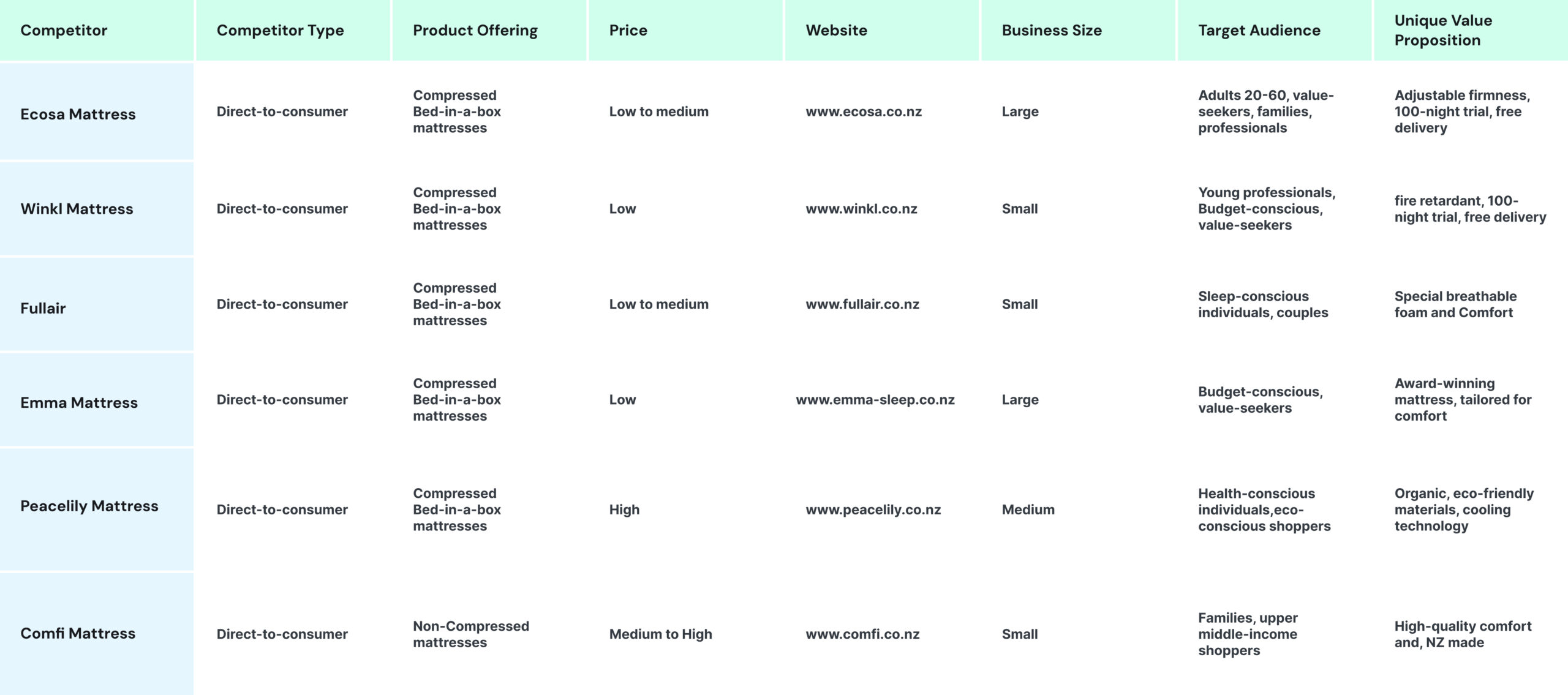
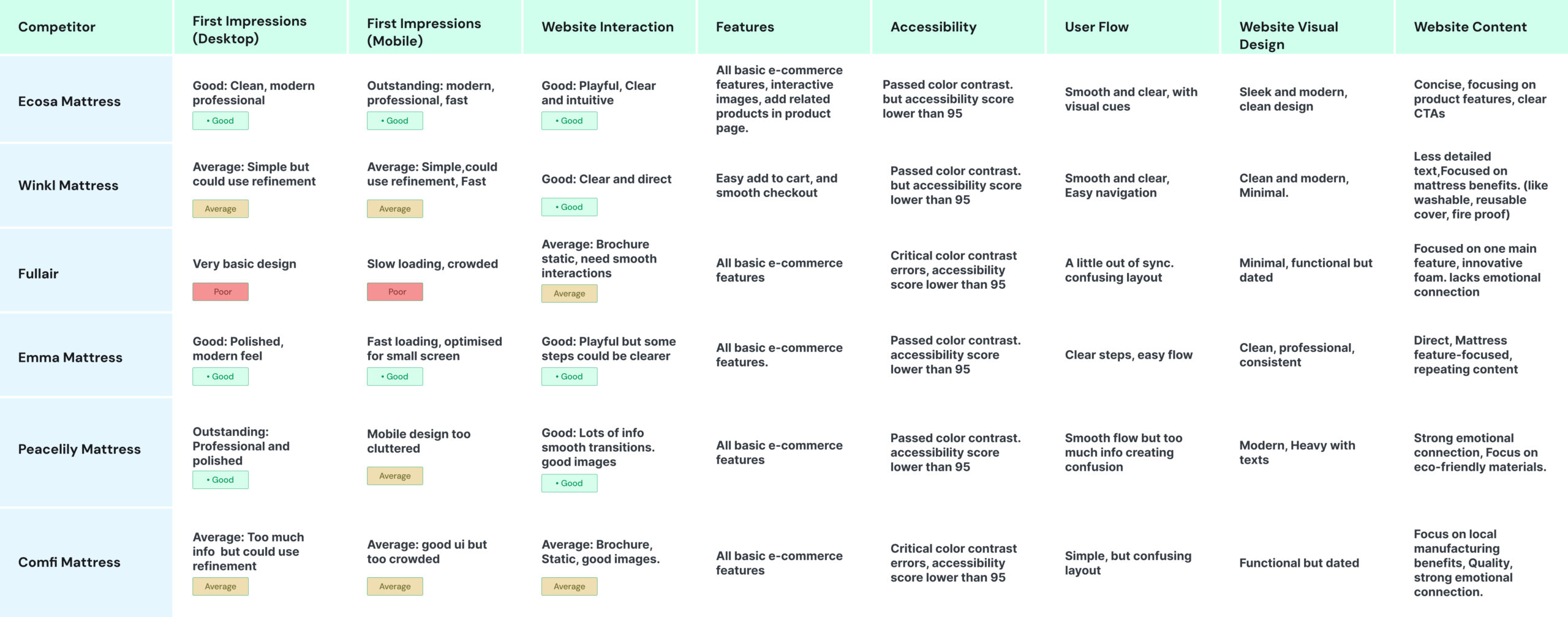
User Survey
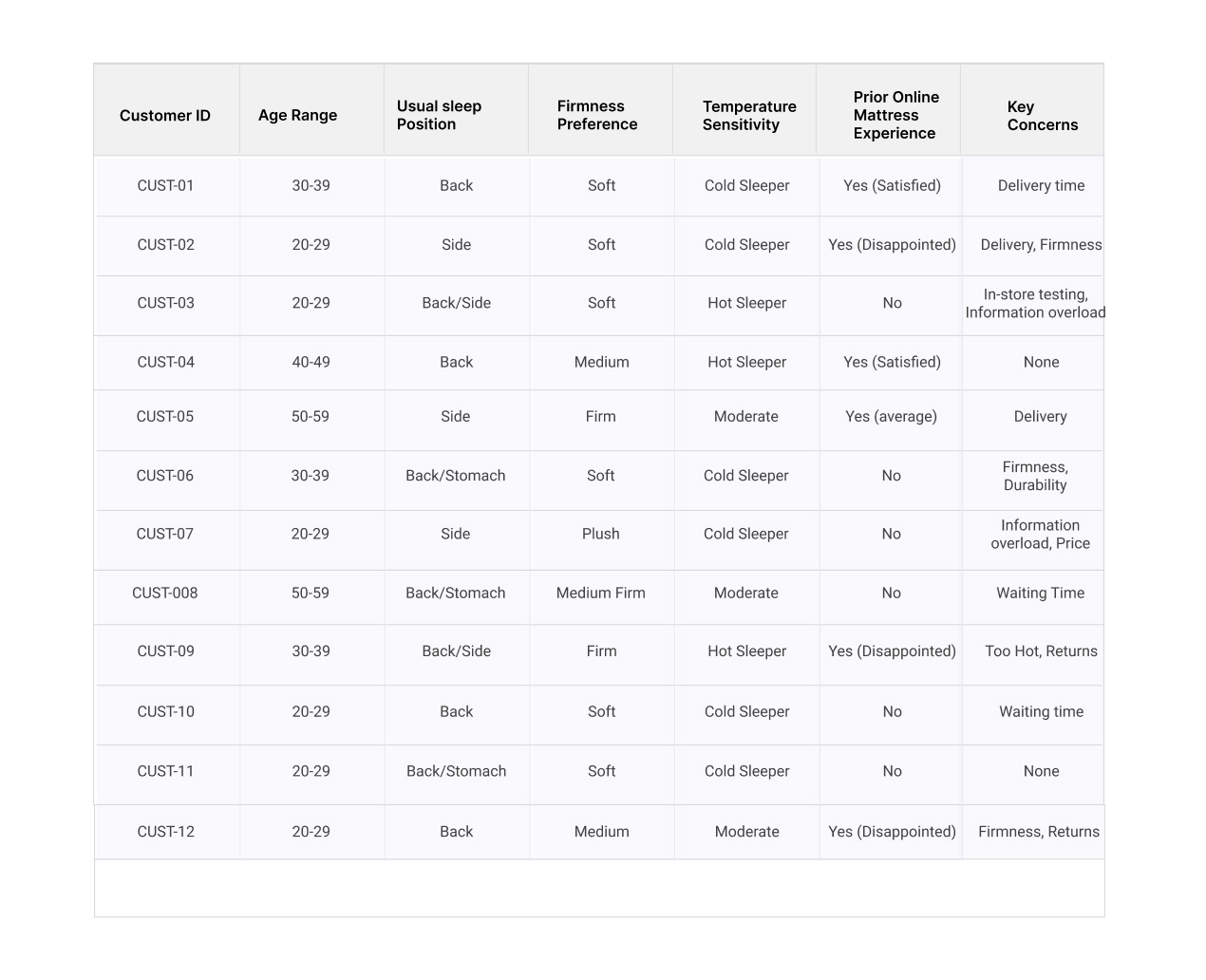

User Persona

User research: Summary
Users value the convenience of online shopping for mattresses, particularly when prices are competitive or significant discounts are offered, home delivery and the ability to browse without time constraints. However, they are hesitant to commit due to concerns about product quality, lack of physical stores to try the mattress, and uncertainty about warranties and returns.
User research: pain points
- Worries About Quality: Since customers can’t touch or test the mattresses in person, they often doubt how good the quality and performance will be when buying online.
- Warranty and Returns Anxiety: Shoppers are anxious about how easy it will be to return a mattress or use the warranty if the mattress does not meet expectations.
- Trust in Online Models: Some users feel cautious about buying mattresses online due to previous negative experiences or rumors they’ve heard about bed-in-a-box options.
User flow & Journey map
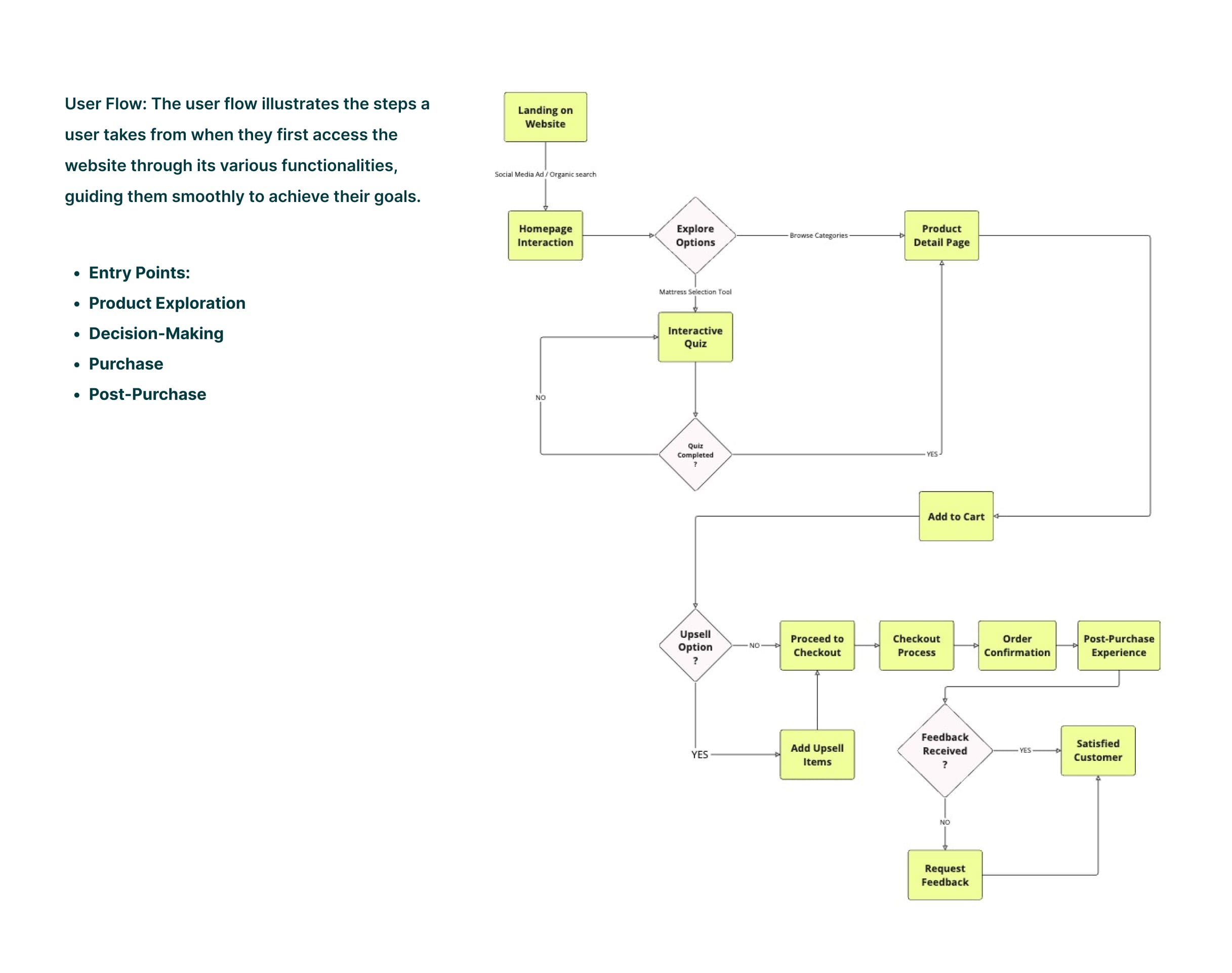
Customer journey map
The customer journey map, based on the user persona, provides a detailed and accurate representation of the user’s experience throughout their interaction with a product or service. It outlines each key stage, from initial awareness to post-purchase, and identifies the user’s goals, touchpoints, pain points, and opportunities for improvement at every step. This map allows businesses to understand the full customer experience, enabling them to design a more user-centered process that addresses concerns, enhances satisfaction, and drives advocacy. By aligning the journey with the user’s specific needs and behaviors, companies can create more effective strategies for customer engagement, retention, and growth.
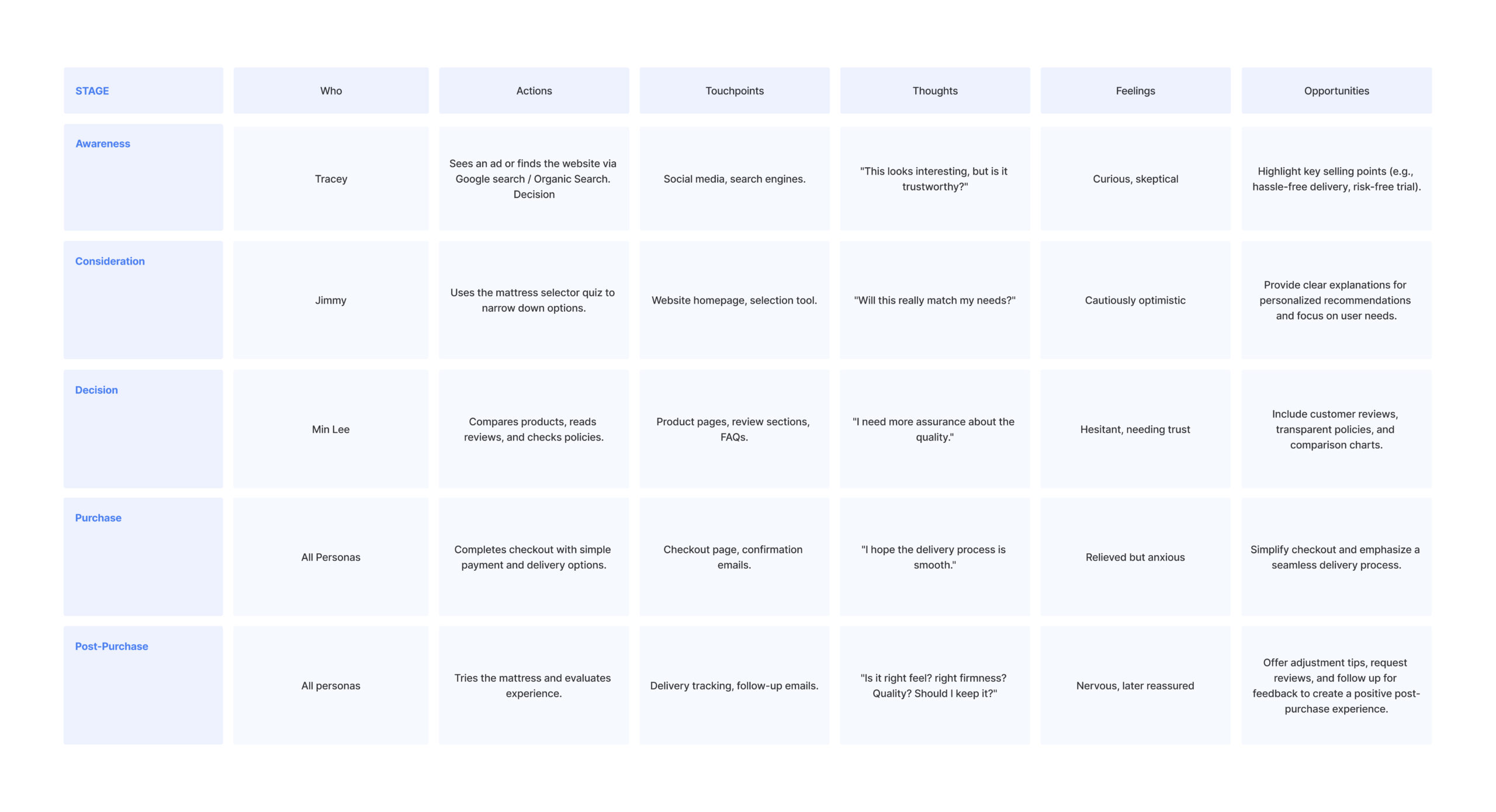
Usability Study
Designing an e-commerce website that stands out from competitors is a challenging task. After conducting usability studies, we concluded that our customers need a website that reflects the quality of the product while maintaining the design minimal yet visually pleasing approach. I was responsible for the visual design, leveraging iterative methods and extensive testing to refine the design.
Balancing user needs with business requirements was critical, as the design needed to be scalable, adaptable to future trends, and flexible enough to accommodate new content or features. Collaboration with the marketing team ensured the design aligned with their needs without compromising user focus.
The main challenge was to seamlessly integrate all these considerations while keeping the user front and center, ensuring an intuitive experience. The modular design approach allowed for certain features to be easily inserted or removed, making the template both versatile and user-friendly.
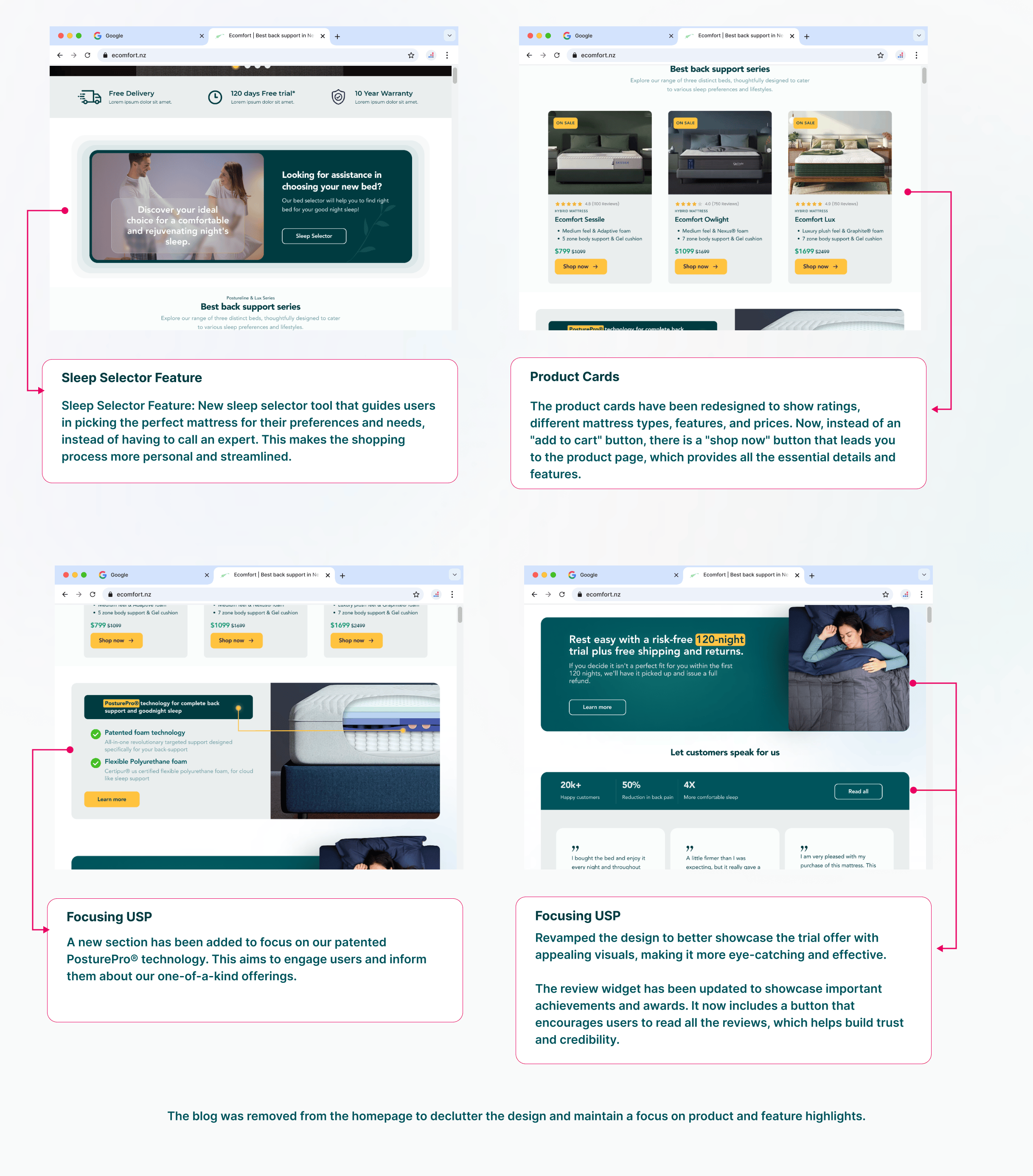
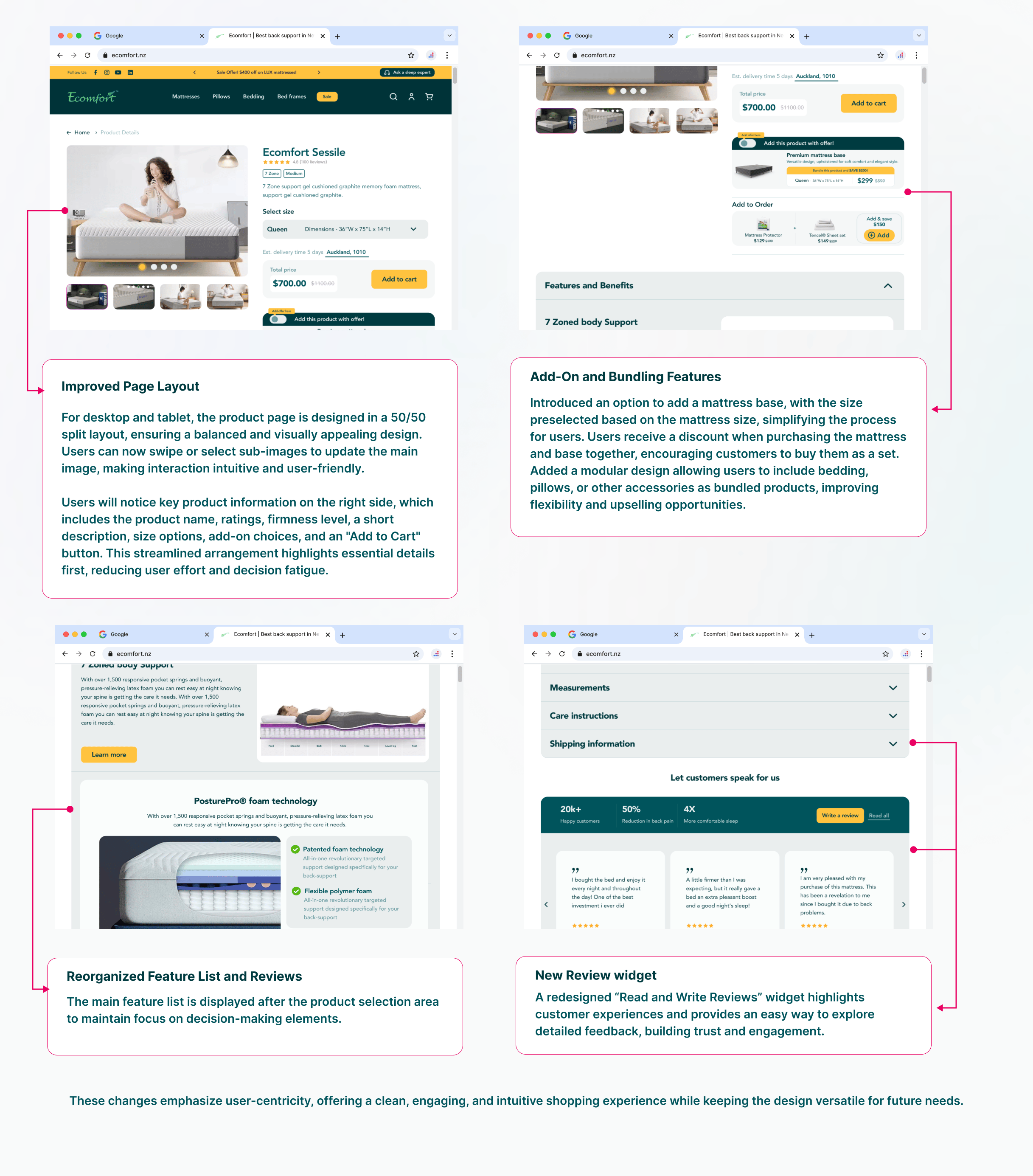
Key Screens
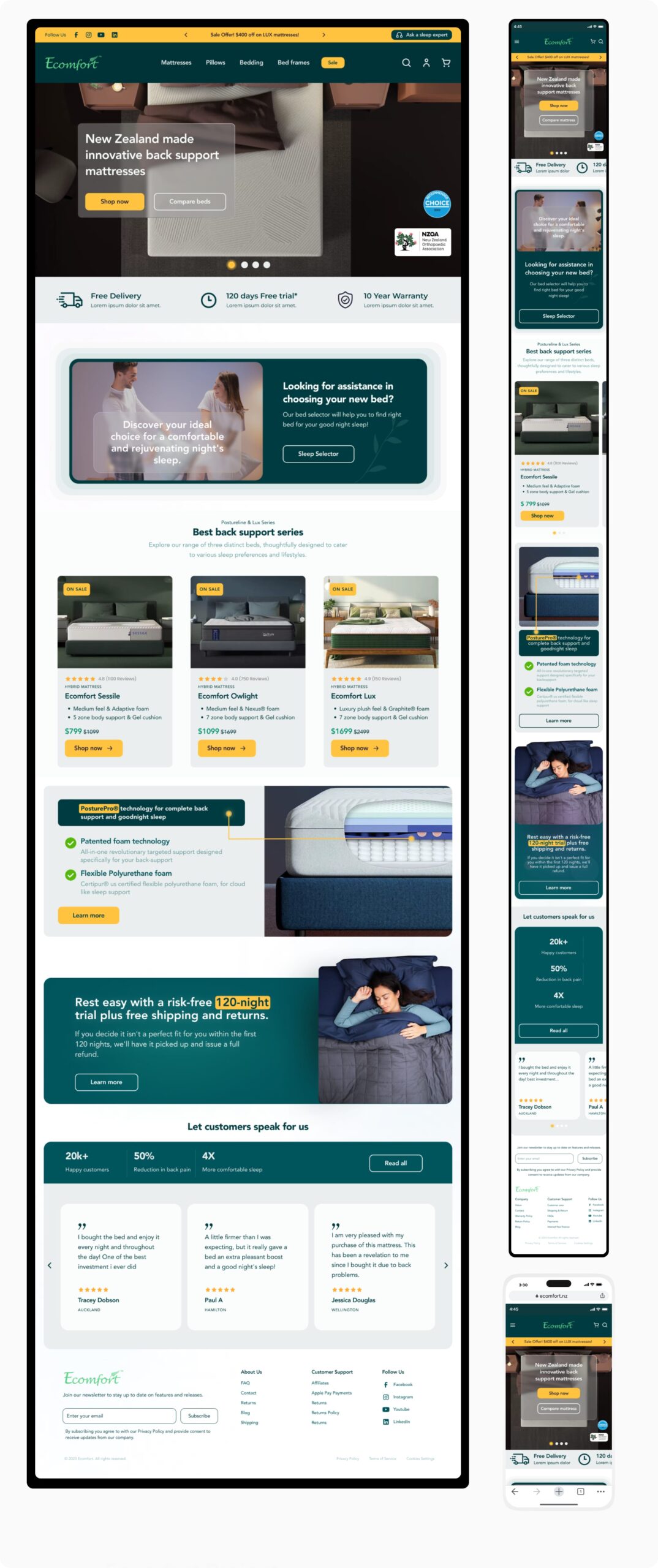
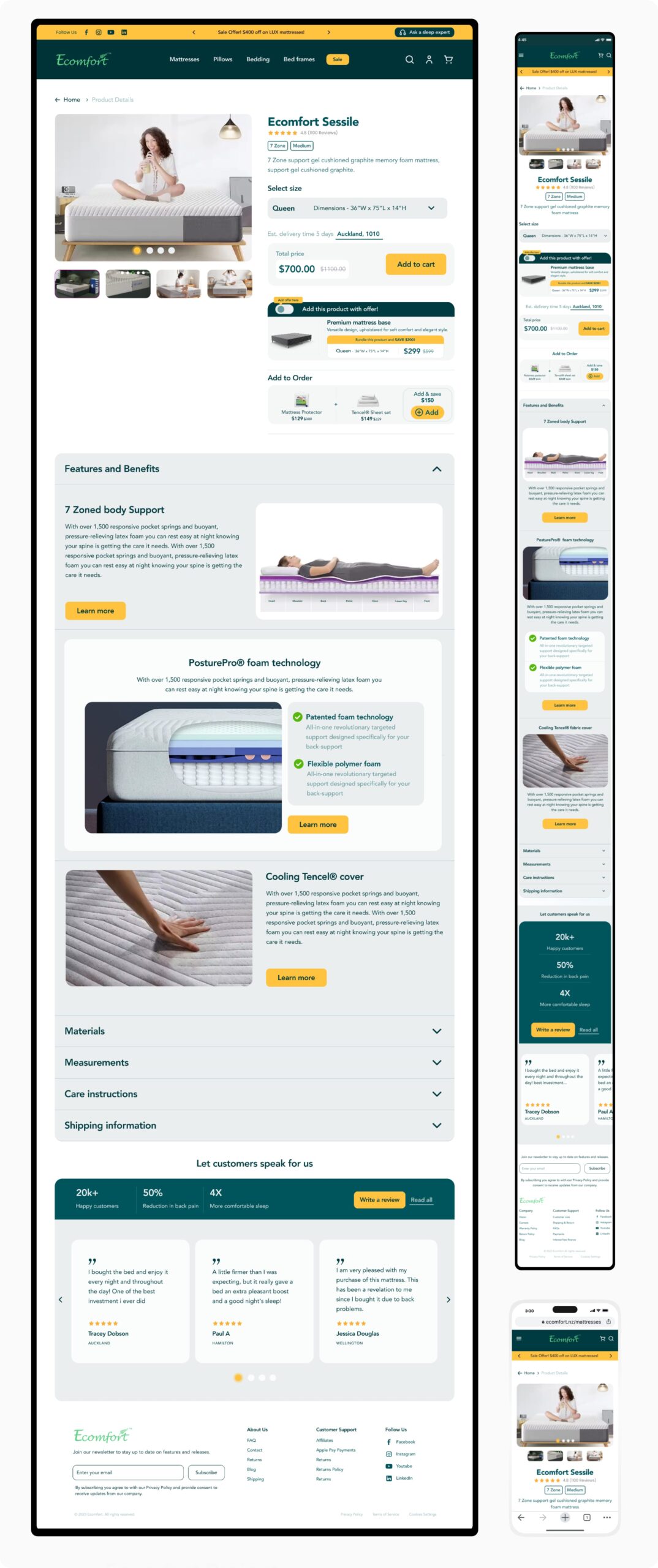
Key Learnings
Creating an e-commerce website is quite different from making regular websites. Both want to ensure users have a good experience, but e-commerce sites mainly focus on driving sales, providing a seamless shopping experience and raising awareness about what products offer. The design emphasises goal-oriented elements like clear CTAs,clear navigation, and detailed product presentations, including features like filters, reviews, and comparison tools or any features which helping customers to ease decision making process and scalability to expand with new products, promotions, or features are critical.
Overall, e-commerce design balances user-centric experiences with business goals, ensuring both usability and scalability to drive revenue and meet market demands.



